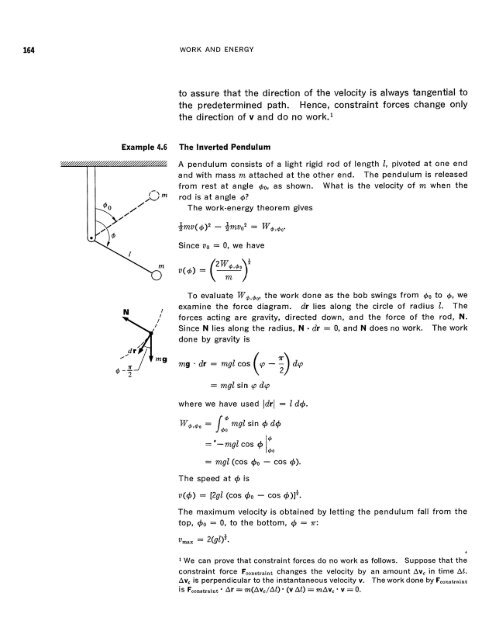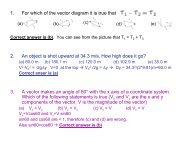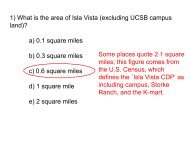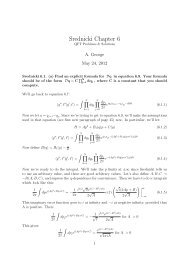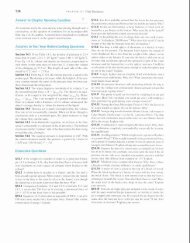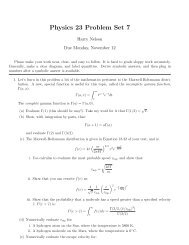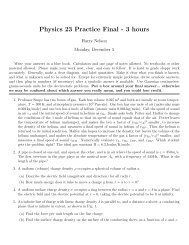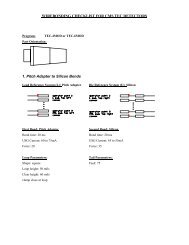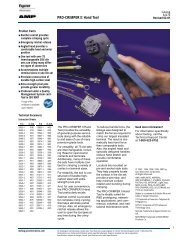Chapter 4 - UCSB HEP
Chapter 4 - UCSB HEP
Chapter 4 - UCSB HEP
You also want an ePaper? Increase the reach of your titles
YUMPU automatically turns print PDFs into web optimized ePapers that Google loves.
WORK AND ENERGY<br />
to assure that the direction of the velocity is always tangential to<br />
the predetermined path. Hence, constraint forces change only<br />
the direction of v and do no w0rk.l<br />
Example 4.6<br />
The Inverted Pendulum<br />
A pendvlwm consists of a light rigid rod of length 2, pivoted at one end<br />
and with mass m attached at the other end. The pendulum is released<br />
from rest at angle 40, as shown. What is the velocity of m when the<br />
rod is at angle 4<br />
The work-energy theorem gives<br />
Since vo = 0, we have<br />
To evaluate W+,+,, the work done as the bob swings from do to 4, we<br />
examine the force diagram. dr lies along the circle of radius l. The<br />
I<br />
,' forces acting arc gravity, directed down, and the farce of the rod, N.<br />
Since N lies along the radius, N dr = 0, and N does no work. The work<br />
done by gravity is<br />
= mgl sin p dp<br />
where we have used ldrl = 1 dt$.<br />
FV+,+. = 1': mgl sin 4 dd<br />
= '-mgl cos # 1'60<br />
= mgl (cos +o - cos 4).<br />
The speed at 4 is<br />
v(4) = [ZgE (cos &, - cos 4)]*.<br />
The maximum velocity is obtained by letting the pendulum fall from the<br />
top, $o = 0, to the bottom. 6, = T:<br />
v,,,<br />
= z(g1)).<br />
t<br />
1 We can prove that constraint forces do no work as follows. Suppose that the<br />
constraint force Fonahaint changes the velocity by an amount Av, in time At.<br />
Av, is perpendicular to the instantaneous velocity v. The work done by Fm,,t,sint<br />
is Fmnmwsist Ar = m(Av,/Al) * (v At) = mAv, * r = 0.


